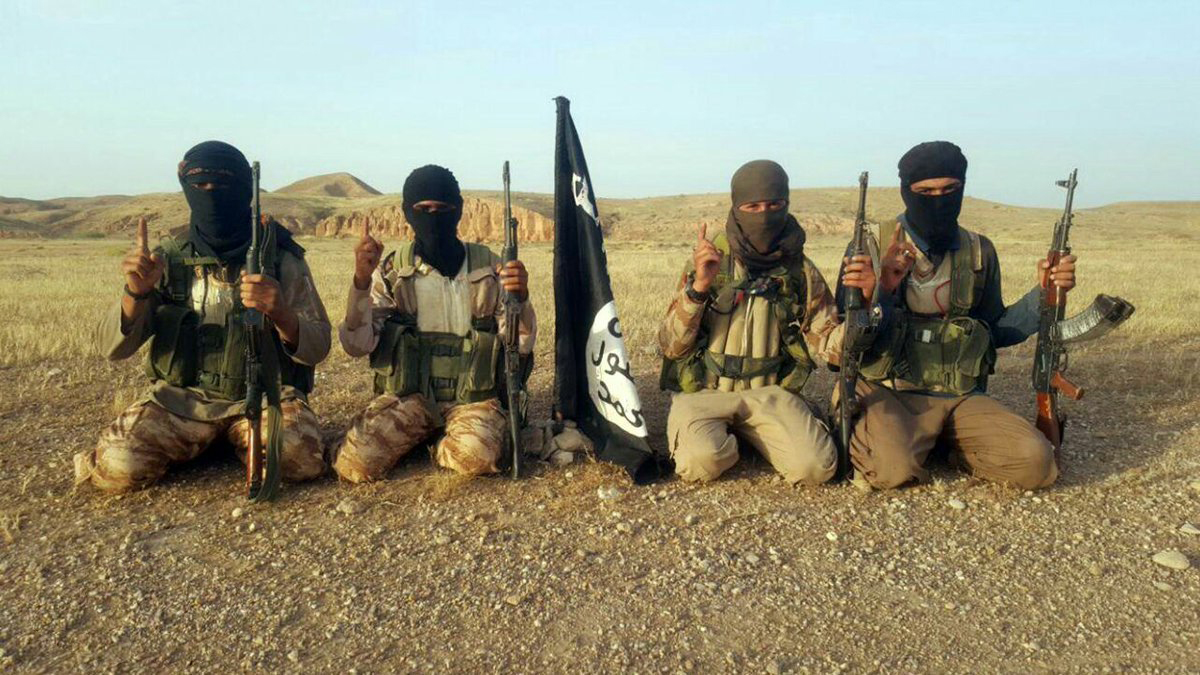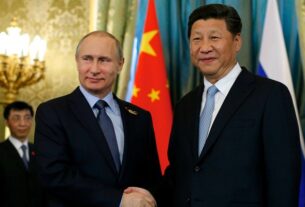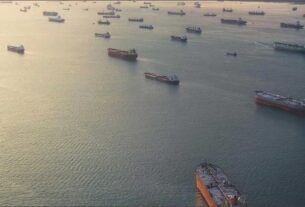War may be won in Mosul but Sunni Jihadis may come back
The ISIS may have fought the battle of Waterloo in Mosul but it is now fast reorganizing itself in Syria and northern parts of Iraq to set up its headquarters and rehabilitate some of the remaining battle hardened guerrillas who are keen to fight like a typical infantry style to snatch back the victory of Iraqi forces.
The battle of Mosul was launched on 17 October by Iraqi Prime Minister Haider al-Abadi. His forces had liberated other Sunni cities from ISIS closer to Baghdad, such as Ramadi, Fallujah and Tikrit.
But Mosul is the real prize. It has been the centre of ISIS operations since the Jihadis swept into it in June 2014. Up until the ISIS conquest it was Iraq’s second largest city; a vast metropolis spread out on two sides of the Tigris River.
On the western bank, called the ‘right bank’ by locals, was the old city. There was also an airport and urban sprawl from the Saddam Hussein era. On the eastern side were the ruins of ancient Nineveh, a university and newer neighbourhoods, connected by wide avenues.
The city had always been a centre of trade and was the heart of an Ottoman province. Historically, it was a diverse city with many Kurds, Assyrian Christians, Jews and Yazidi minorities.
Jewish travellers remarked on its wealth and the relative security they enjoyed there. However, the decline of the Ottoman Empire changed the city’s position in the Middle East. From being a centre of trade it became a disputed region between modern Turkey and the British Mandate of Iraq.
The British were intent on installing King Faisal in Baghdad, who had helped lead the Arab Revolt and was a keen ally of British military officer and diplomat T E Lawrence.
Because Mosul and the surrounding region had many Sunni Arabs it was seen as a bulwark against both Kurdish and Turkish irredentism. And of course there was oil. It was here that the newly formed Iraq would draw its northern flank, on the banks of the Tigris, and anchor itself in this city.
By the 1950s, Mosul had become a centre of Arab nationalism, influenced by the rising voice of Gamal Abdel Nasser in Egypt. By the 1960s it was central to Hussein’s plans for building Iraq into an economic and military powerhouse.
He invested in Mosul’s infrastructure, and the locals became the backbone of the Ba’athist officer corps, sending more sons per capita than anywhere else in the country. In a sense, Mosul was Iraq’s Prussian Province, a key to ruling the construct area which was in its vast majority Shia and Kurdish, both of whom were brutally suppressed by Hussein.
In the 1990s, after Hussein was ejected from Kuwait, the US and its allies helped provide support for a Kurdish region in northern Iraq. The Kurdish hill country around Duhok is only 70 kilometres away and Erbil (Hawler) is only 85 kilometres.
Transformation of Mosul
That means just one hour away from Mosul were the Kurdish landscapes where an autonomous region was rising. At the same time Shia Iraqis in the south of the country were looking to overthrow Hussein and rule Iraq.
Their dream came true in 2003 when the US and the UK toppled the dictator and rolled into Baghdad. After Hussein fled Baghdad, his sons Uday and Qusay were killed by US forces in Mosul on 22 July 2003.
‘The increasingly influential Muslim Brotherhood and Salafi clerics and leaders in Mosul stirred these emerging fears of Sunnis,’ said experts, about the transformation of Mosul after the fall of Saddam into a centre of the Sunni insurgency.
US forces had to contend with a brutal insurgency and launched major operations in 2004 and 2008 to clear out the insurgents. In early 2008 the number of terror attacks in Mosul reached more than 600: more than 20 a day. That represents a situation of war, not just ‘insurgency’.
The groups that presaged the rise of ISIS, such as Al-Qaeda and Jamaat Ansar al-Sunnah operated in Mosul. Kurds and other minority Christians, Shabaks and Yazidis, who often lived in the eastern part of the city, were targeted in numerous attacks. Many of them fled to the KRG.
Many Kurds said they were afraid to journey to Mosul. The head of a Kurdistan TV station who had dozens of reporters in the city said he and his men would often dress like Arabs, with khaffiyas, to drive around and not stand out.
The defeat of the Iraqi army in 2014 was thus a replay of former events. The difference was there was no US military ‘surge’ to help save the Iraqis. Instead, Iraqi military divisions melted away and ISIS captured some 2,000 armoured vehicles around Mosul.
For more than two years ISIS brought its brand of extremism to the city, much as the Taliban once brought to Kabul in Afghanistan. Yazidi women were brought by the busload to Mosul and sold into slavery.
ISIS ran a sophisticated system. It photographed all the women before raping and selling them. It established media offices and built sophisticated tunnel systems and improvised explosive devices (IEDs) to withstand the anticipated Iraqi army’s attempt to retake the city.
Many experts, prior to the Iraqi Mosul offensive, misunderstood the nature of ISIS rule and its defensive system. They predicted a million refugees and a city reduced to rubble. But ISIS viewed the Moslawis as its congregants and constituents.
It is an Islamic State and the city that exists is almost purely Sunni Arab (some Kurds and Shabaks remained under ISIS). The battle for Mosul is about one per cent the size of the battle of Berlin in 1945 in terms of forces and casualties.
Similarly, the damage to the city will not look like Berlin. The US coalition has said it will not use airstrikes and bombardment on the city. That means small arms will be used street-by street to defeat a cunning enemy. But infrastructure will survive.
Qubad Talabani, deputy Prime Minister of the KRG (Kurdistan Regional Government) in Iraq, speaking at Chatham House on 7 December told the audience that ‘a military victory, one where only territory is reclaimed from ISIS, to include their so-called capital, is not outright victory. ISIS did not fill a security vacuum in Iraq. It filled a political one’.
The central fact in the life of Mosul since 2003 has been its degraded political influence in Iraqi politics. Its Sunni Arab population went from being a military and governing elite to being a minority.
Commentators often prefer to see the Sunnis in Mosul as victims, fearful of Shia and Kurdish rule in the region.
The solution sketched out has envisioned providing the Sunnis with an autonomous province similar to the KRG as a solution to the tendency of large numbers of people in Mosul and the area surrounding it, such as Tal Afar, to support jihadism. Former US Ambassador to the UN, John Bolton, even expressed support for a ‘Sunnistan’ in a November op-ed in The New York Times.
For Sunnis the painful wound of ‘losing’ Iraq will never be fully healed. There are Sunni tribes such as the Al-Jughayfa in Haditha or the Shammar in northern Iraq, who have traditionally opposed political Islam and the terror of extremists.
There are Sunni tribesmen who have allied themselves with the Iraqi army and central government. Iraqi Member of Parliament Ahmed al-Jarba, who is from Mosul and fled to Erbil when ISIS arrived, has given frequent interviews with the media about the need to stabilise the city.
Many Moslawis are not loyal to ISIS, as evidenced by the fact that out of a million of them only a few thousand joined the extremists. But the same Moslawis did greet ISIS when it arrived.
They resembled the Austrians in the Second World War, who had greeted Hitler in 1938 and then claimed to be the first victims of Nazism when they were liberated in 1945.
Mosul‘s unstable politics since 2003 have resulted in three jihadist takeovers in 2004, 2007 and 2014. There is no evidence that within another ten years there won’t be another one, since the city is far from Baghdad and the weakened central government cannot control it. This makes for a power vacuum.
In the 1990s, and again in 2003, Kurdish forces threatened to take Mosul as they did Kirkuk. They did not because of Turkish warnings and their own inability to complete the operation.
The Kurdish forces (Peshmerga) did play a role in helping to put down the insurgency in 2004 and sought to protect Kurds afterword. However, they failed in 2014 to prevent the conquest of the city and to anticipate the blitzkrieg that ISIS would launch in August 2014 against the Kurds.
Since October 2016, several meetings between al-Abadi and KRG President Masoud Barzani have resulted in closer cooperation between the Iraqi army and Peshmerga. ‘We assure the Mosul citizens that they will be safe and they will return to their normal life. We hope there will be no revenge between powers or anyone,’ Barzani said in a statement released on 17 October.
Territorial despite
That statement also noted that the governments in Baghdad and Erbil had launched a ‘joint committee’ to deal with political issues upon liberation.
The results of the meetings between the KRG and Baghdad were an agreement that the Iraqi army would re-take Mosul without the Peshmerga. The Kurds had said before that wherever the Peshmerga shed blood would become Kurdish territory after 2016.
Baghdad opposes the KRG enlarging its areas into territories disputed with the central government, such as Kirkuk, Nineveh and Sinjar. But the Peshmerga were the ones fighting ISIS for two years along 1,000 kilometres of frontlines and they secured many areas.
Baghdad wants Mosul to be its victory, to have its flag fly on the streets and in the Great Mosque where ISIS leader Abu Bakr al-Baghdadi declared his caliphate in 2014.
For Kurds, then, the liberation of Mosul is important for bringing security to the western flank of the KRG. This suggests Kurdish forces will want to stay in the Mosul District of Bashiqa and other areas they have taken, such as Mosul Dam.
They learned in 2014 that insecurity in Mosul can lead to bad consequences for the KRG. The Kurds also want to return to their neighbourhoods. Up until recently they made up around 25 per cent of the city’s population, and they want their rights to those areas restored and to enjoy security within them.
Iran and Turkey both have competing interests in Mosul. Iran would like to use its Shia militia proxies affiliated with the PMUs to link up Shia communities from Baghdad through to Tal Afar.
Tal Afar was about one quarter Shia Turkmen before ISIS swept northern Iraq. There are other Shia communities in Nineveh, including Shia Shabaks, an ethnic minority.
Using these communities as a tool, Iran would like to not only undermine any Sunni aspirations, but it also wants to protect these communities. The people of Tal Afar became refugees fleeing ISIS.
Iran also wants to weaken the KRG. It opposes Kurdish independence and works closely with the Iraqi central government. However Iran also has better relations with Kurdish political parties such as the Patriotic Union of Kurdistan (PUK) and Gorran movement.
Barzani, the president of the KRG, is also the leader of the Kurdistan Democratic Party (KDP), which fought a brief civil war with the PUK and the Kurdistan Workers Party (PKK) in the 1990s. Since the rise of ISIS they have all been working closely together, but tensions remain.
This means the Iranian role is complex. Through the Shia militias it exports power, but it also works closely with local Shia politicians and with those Kurdish politicians who have a more amicable relationship with it.
Iran has no interest in rebuilding Mosul, but it does not want Mosul to become the heart of a robust Sunni autonomous area, or allow Sunni jihadism to raise its head again.
Since the 1990s Turkey has maintained a military presence in northern Iraq, consisting of several thousand men along the border. These were sent to keep the PKK from infiltrating Turkey.
Since 2014 Turkey has expanded its role to help train a local Arab militia called Hashd al-Watani that is run by former Mosul Governor Atheel Nujaifi. Because Turkey enjoys good relations with the KRG it was able to base soldiers near Bashiqa to train refugees from Mosul to help retake the city. In December 2015 and October 2016 Iraq demanded that Turkey withdraw its forces from Iraq.
Turkey and Iraq came to a war of words about Mosul in October as Turkish President Reccep Tayyip Erdogan said that the province of Mosul historically belonged to Turkey and that Turkey should play a role there.
The ‘role’ ostensibly involved protecting Turkmen minorities, but in reality the scheme is much larger and involves supporting Sunnis, such as the Nujaifis, who have a historic relationship with Turkey dating back to Ottoman times.




